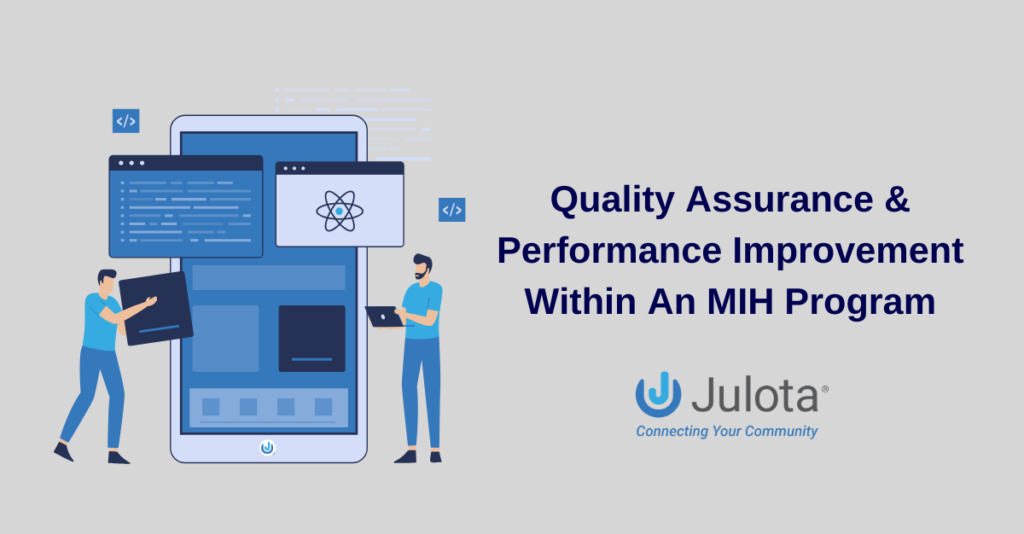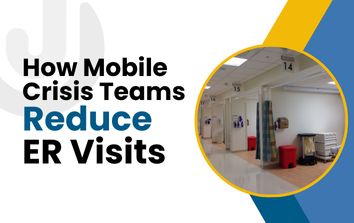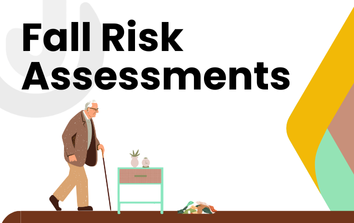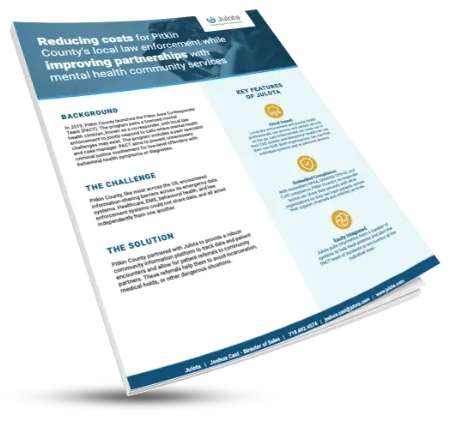MIH programs are gaining traction nationwide; however, good quality assurance and performance improvement (QAPI) are essential to prevent the momentum from stalling. But what exactly is the key to solid quality assurance? And how do MIH programs improve performance? Let’s talk about it.
Mobile Integrated Health (MIH) programs should adopt a system that evaluates their organization for weak points to establish quality assurance and performance improvement. Many health organizations follow a process: plan, execute, evaluate the results, and adjust as needed. Good data collection, focused studies, and open communication are vital to healthy quality assurance.
While MIH holds a ton of potential, if quality assurance is sometimes ignored, it’s possible that MIH programs won’t fully engage the mainstream healthcare system. Let’s talk about why MIH programs must have QAPI systems and how to implement these practices into your program.

Why is Quality Assurance Important Within an MIH Program?
Mobile integrated healthcare has often operated as a sub-branch of emergency medical services (EMS). While EMS plays a vital role in healthcare, ambulance services (in its modern form) haven’t existed that long. Even forty years ago, many paramedics and EMTs were known as “ambulance drivers.”
What’s the point? EMS and MIH are both relatively new ventures in the history of healthcare, and most organizations focus on getting the process started rather than on taking the time to perfect the system. And yet, for MIH to continue growing, managers and administrators must actively pursue quality assurance and performance improvement.
With that said, let’s talk about how MIH programs can implement QAPI.
What are Some Aspects of Quality Assurance Within an MIH Program?
How do you get started with a quality assurance program? The first step is to have one. If you don’t have a system in place, there’s nowhere to start and nothing to improve. Even if it’s a lousy system, at least you have something you can evaluate and fix.
Ideally, all stakeholders should be involved in some aspect of the QA process: administrators, managers, patients, field providers, partnering health organizations, community leaders, and local governments. Quality assurance should work democratically, with each group holding some say in how an MIH program grows and changes.
Once a sort of committee is in place, there’s a specific process for finding problems within the program and then taking time to correct them. Often, there is a stepwise process that continues in a cyclic pattern. Let’s talk about it.
Here are several aspects of good quality assurance:
- Make a plan
- Implement a measurable change
- Read the data
- Adjust accordingly
Let’s look at examples of how this process might work in the real world.
Step 1: Make a Plan – QA for MIH
The first step is to make a plan to evaluate a current problem within the system. How do you know which problem to tackle first? This is where establishing a team that meets regularly to discuss quality improvement is essential. Ideally, these people should understand stakeholders’ complaints and rank issues from most important to least important.
For example, let’s say that some community paramedics forget to document a specific aspect of a patient encounter, such as some SDOH questions. It could be that, due to this lack of documentation, the patient isn’t receiving the long-term care they need, or the physicians aren’t receiving the information they need to treat the patient.
Now, let’s make a plan to change this problem. In the next section, we’ll talk about how you need to take care when making a change to avoid unintended consequences. As best you can, you should take the time to anticipate any side effects of your plan before you enact change. We’ve all encountered situations where a plan to fix something only spider-webbed into more problems.
Note: Sometimes, an initial roadmap is helpful. Documents like this one, Quality Improvement for Prehospital Providers, set a sort of groundwork for how QA operates.
Step 2: Make a Change – QA for MIH
The next step in a quality assurance process is to make a change. But not just any change – you want to make a measurable and controlled change. If you find a minor problem and begin making sweeping changes, you can run into problems.
First, overcorrection can be dangerous. Like driving a car, you want to be careful not to swerve too hard when you see an obstacle up ahead – if you make too many drastic changes, your program can spiral out of control, creating too many causes and effects to measure.
Second, if something fixes the problem, you want to know what (exactly) worked, and if you’re disorganized in how you make a change, it’s hard to measure results.
Let’s go back to the example of a problem with community paramedic documentation. In one sense, it might be tempting to completely throw out the documentation platform (as it might be the reason the paramedic is missing a key piece of documentation), but this broad change might create more problems in its wake.
Perhaps the better option would be to implement more minor changes, such as programming a reminder into the documentation system and seeing if this specific change solves the problem.
Step 3: Read the Data – QA for MIH
After implementing a change, it’s time to evaluate if it worked. Now, this is where it becomes vital that the change is measurable. Controlling for variables and determining what worked might be difficult if you made a considerable change.
Again, let’s return to the example of paramedic documentation. Let’s say you program an alert into the system, but the provider still struggles to document the patient encounter accurately. Then, it might be time to consider a broad change, such as moving to a different reporting system.
However, it’s imperative that at each step in the quality assurance process, there is a controlled collection of information. If you do something right, you want to know what it was. If you do something wrong, you want to correct it quickly.
Tip: Use a good data collection tool. If you’re unable to pull charts from your current data, then it doesn’t matter how good your plan was – you won’t be able to tell if it worked. Software tools offered by Julota are made for MIH programs and are designed to give managers a wide range of data collection tools.
Step 4: Make Adjustments (and Repeat) – QA for MIH
The last step is to make adjustments that make sense. Again, it’s essential to be careful about pulling the steering wheel too hard. Take the time to figure out what went wrong and what went right – and listen to the stakeholders.
Sometimes, a change can appear positive (from one perspective), but it can have adverse effects elsewhere. For this reason, you should consider the ripples of any decision.
Back to our example: if you create new rules around patient documentation, and they are more thorough, but the paramedic is now stressed for time and doesn’t feel they can spend as much time focusing on patients, or they think they are unreasonably rushed between calls, then it’s wise to evaluate the overall benefit of the change.
Ask this question: are the benefits worth the consequences?
What are Several Aspects of Performance Improvement?
We’ve talked a little about quality assurance, but let’s talk about performance improvement. What’s the difference? Quality assurance is about maintaining a solid base level of care. Performance improvement is about progressing and improving (even if you’re already good).
Here are some aspects of performance improvement:
- Involve the providers: The providers in the field should have some agency for change. Providers who frequently see problems but cannot change them often walk a road of frustration.
- Establish goals: To improve performance, don’t work in abstract “we need to do better” terms. Instead, take some time to set tangible goals and try to provide these goals at an individual level.
- Make decisions based on facts: Sometimes, what we think about something isn’t true. While hunches and gut feelings shouldn’t be ignored, it’s also essential to include hard data in the decision-making process.
If you’re interested in more ways to improve your program, check out our guide on 7 tips to improve MIH.
Final take: How to Assure Quality Within an MIH Program
Many healthcare organizations already follow quality assurance and performance improvement systems. To continue the momentum in mobile-integrated healthcare, it’s crucial for programs to make QAPI a priority.
Most QAPI programs follow a cyclic pattern: make a plan, make a change, evaluate the data, and adjust accordingly. While this works on an organizational level, it’s also wise to focus on individual performance improvement – give employees the power to make changes, provide them with specific goals, and make improvement decisions from a place of convincing data.
Contact Julota to see how their MIH software can improve your program’s quality, efficiency, and communication.




